Advertisements
Advertisements
प्रश्न
In the given figure, PQRS is a parallelogram in which PA = AB = Prove that: SA ‖ QB and SA = QB.
उत्तर
Construction:
Join BS and AQ.
Join diagonal QS.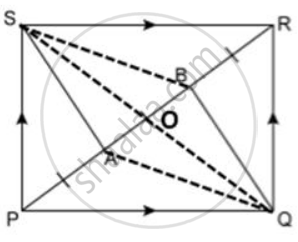
Since diagonals of a parallelogram bisect each other.
∴ OP = OR and OQ = OS
Also, PA = AB = BR
Now, OP = OR and PA = PB
⇒ OP - PA = OR - PB
⇒ OA = OB
Thus, in quadrilateral SAQB, we have
OQ = OS and OA = OB
⇒ Diagonals of a quadrilateral SAQB bisect each other.
⇒ SAQB is a parallelogram.
⇒ SA || QB
⇒SA = QB. ...(Opposite sides are equal)
APPEARS IN
संबंधित प्रश्न
ABCD is a rectangle with ∠ADB = 55°, calculate ∠ABD.
P is a point on side KN of a parallelogram KLMN such that KP : PN is 1 : 2. Q is a point on side LM such that LQ : MQ is 2 : 1. Prove that KQMP is a parallelogram.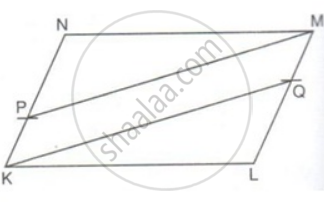
Prove that the line segment joining the mid-points of the diagonals of a trapezium is parallel to each of the parallel sides, and is equal to half the difference of these sides.
In a parallelogram PQRS, M and N are the midpoints of the opposite sides PQ and RS respectively. Prove that
RN and RM trisect QS.
ABCD is a trapezium in which side AB is parallel to side DC. P is the mid-point of side AD. IF Q is a point on the Side BC such that the segment PQ is parallel to DC, prove that PQ = `(1)/(2)("AB" + "DC")`.
In the given figure, PQRS is a trapezium in which PQ ‖ SR and PS = QR. Prove that: ∠PSR = ∠QRS and ∠SPQ = ∠RQP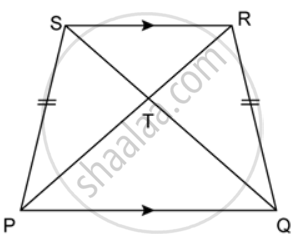
Prove that the diagonals of a kite intersect each other at right angles.
In ΔPQR, PS is a median. T is the mid-point of SR and M is the mid-point of PT. Prove that: ΔPMR = `(1)/(8)Δ"PQR"`.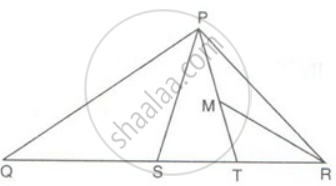
In the figure, ABCD is a parallelogram and CP is parallel to DB. Prove that: Area of OBPC = `(3)/(4)"area of ABCD"`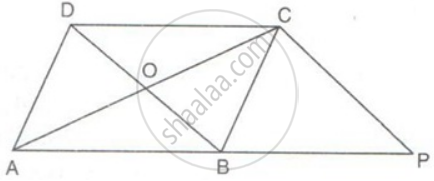
The medians QM and RN of ΔPQR intersect at O. Prove that: area of ΔROQ = area of quadrilateral PMON.
